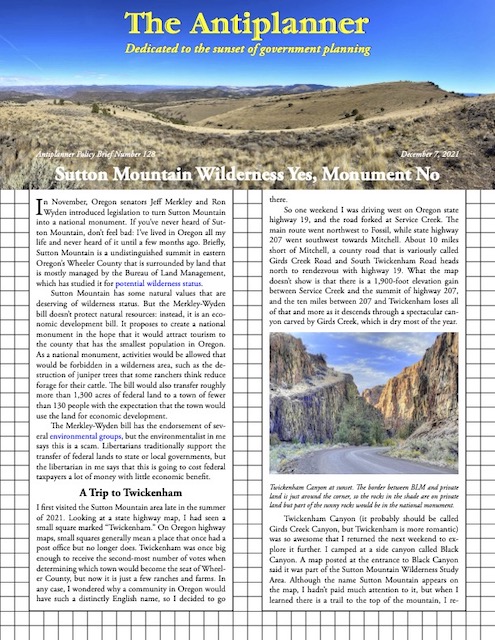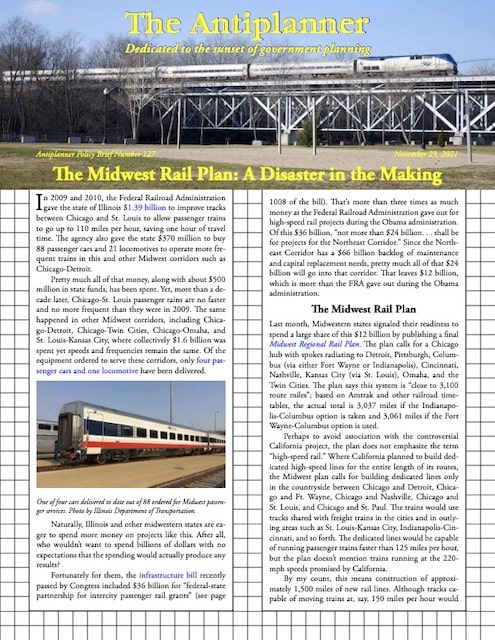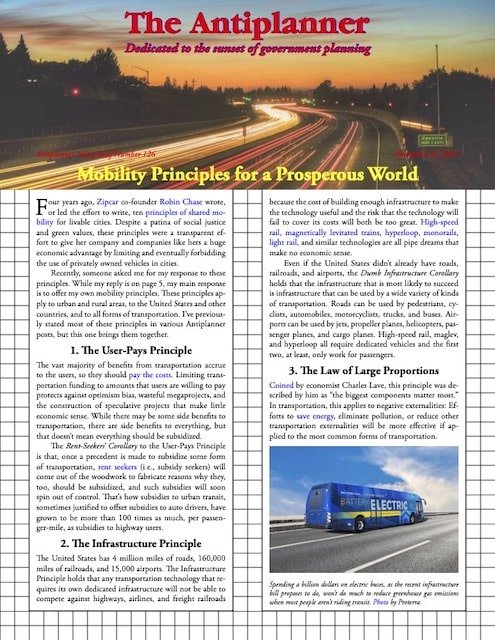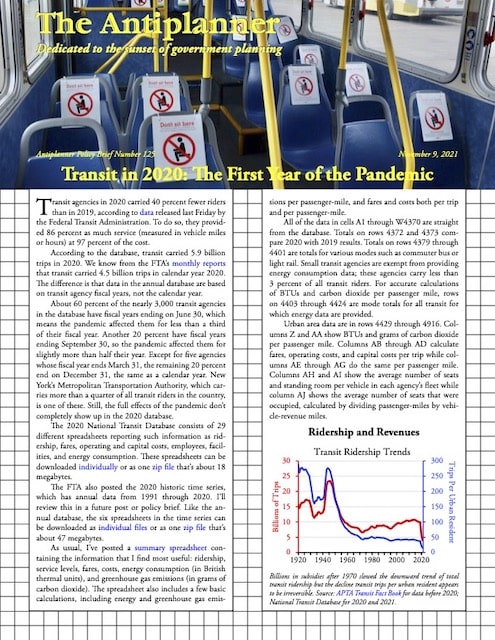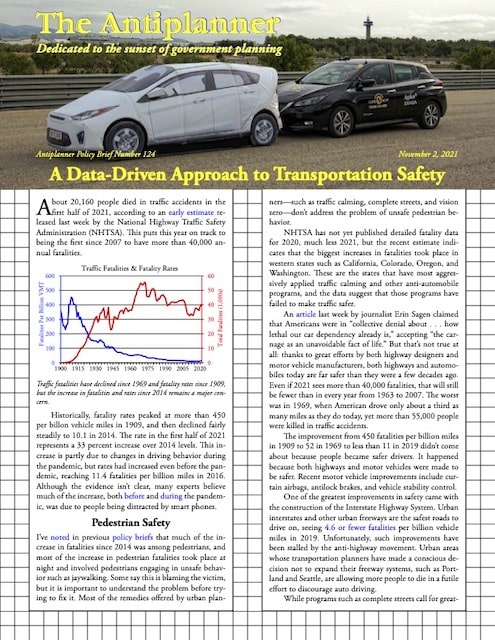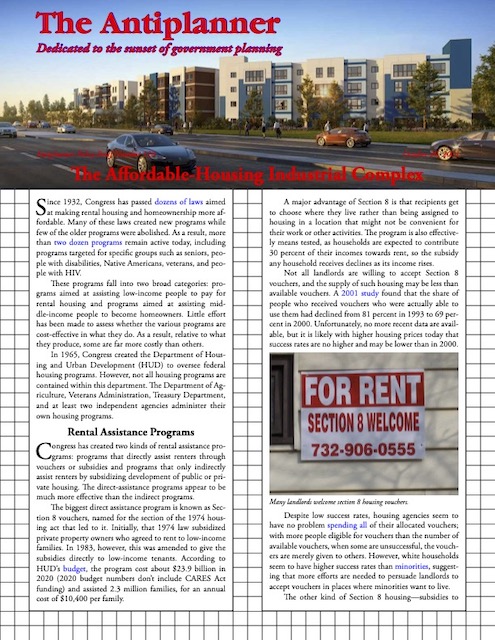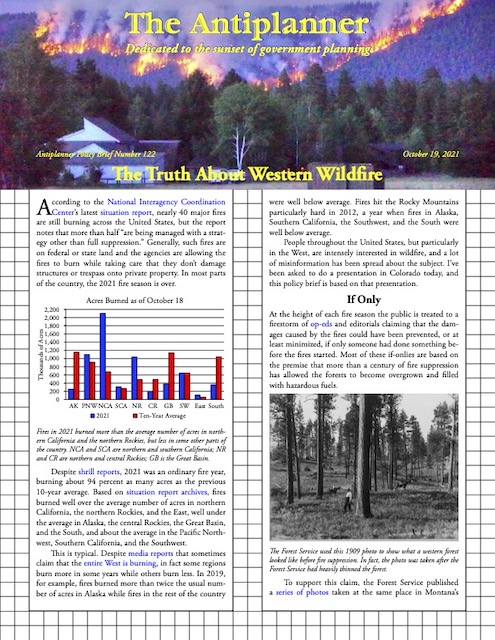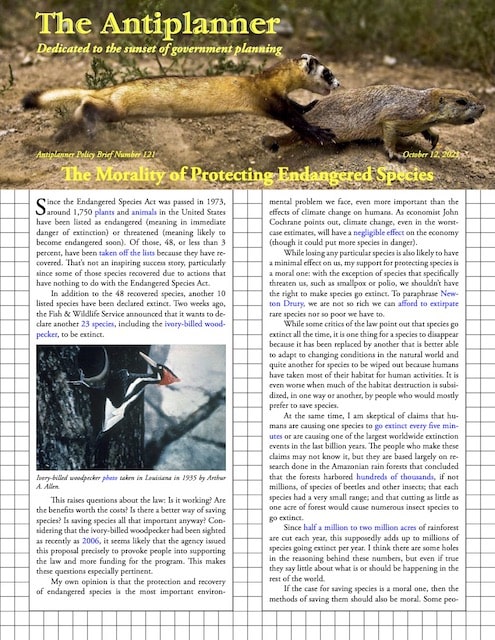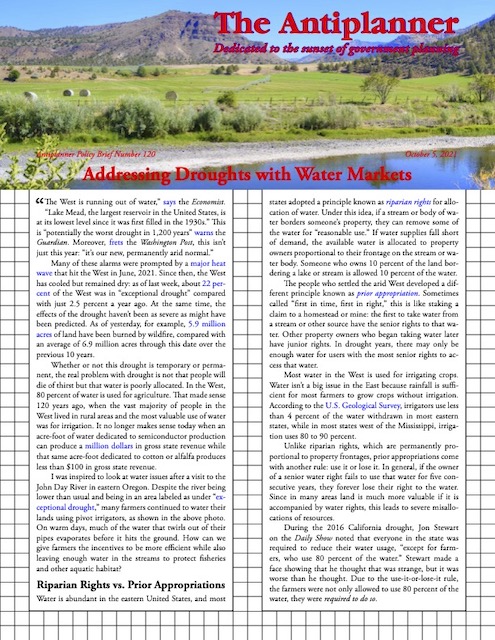Now that Congress has passed an infrastructure bill, major media outlets are beginning to ask questions about how the money will be spent. Using the Honolulu rail project as an example, the New York Times wants to know why so many infrastructure projects suffer from such large cost overruns. Bloomberg asks similar questions using Boston’s Green Line extension as an example.
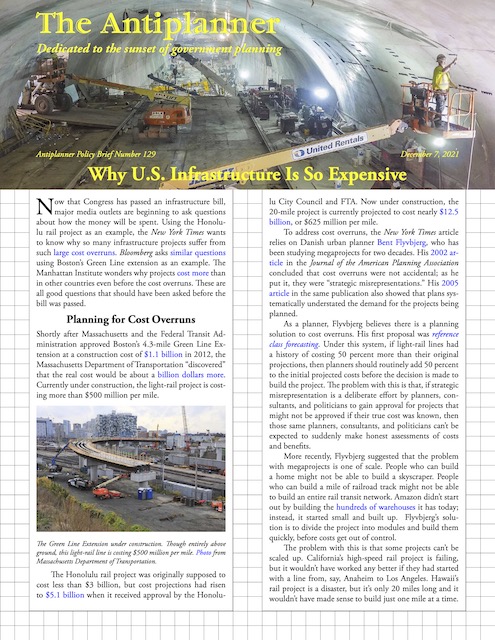 Click image to download a four-page PDF of this policy brief.
Click image to download a four-page PDF of this policy brief.
The Eno Transportation Foundation and Manhattan Institute wonder why projects cost more than in other countries even before the cost overruns. These are all good questions that should have been asked before the bill was passed. Continue reading

